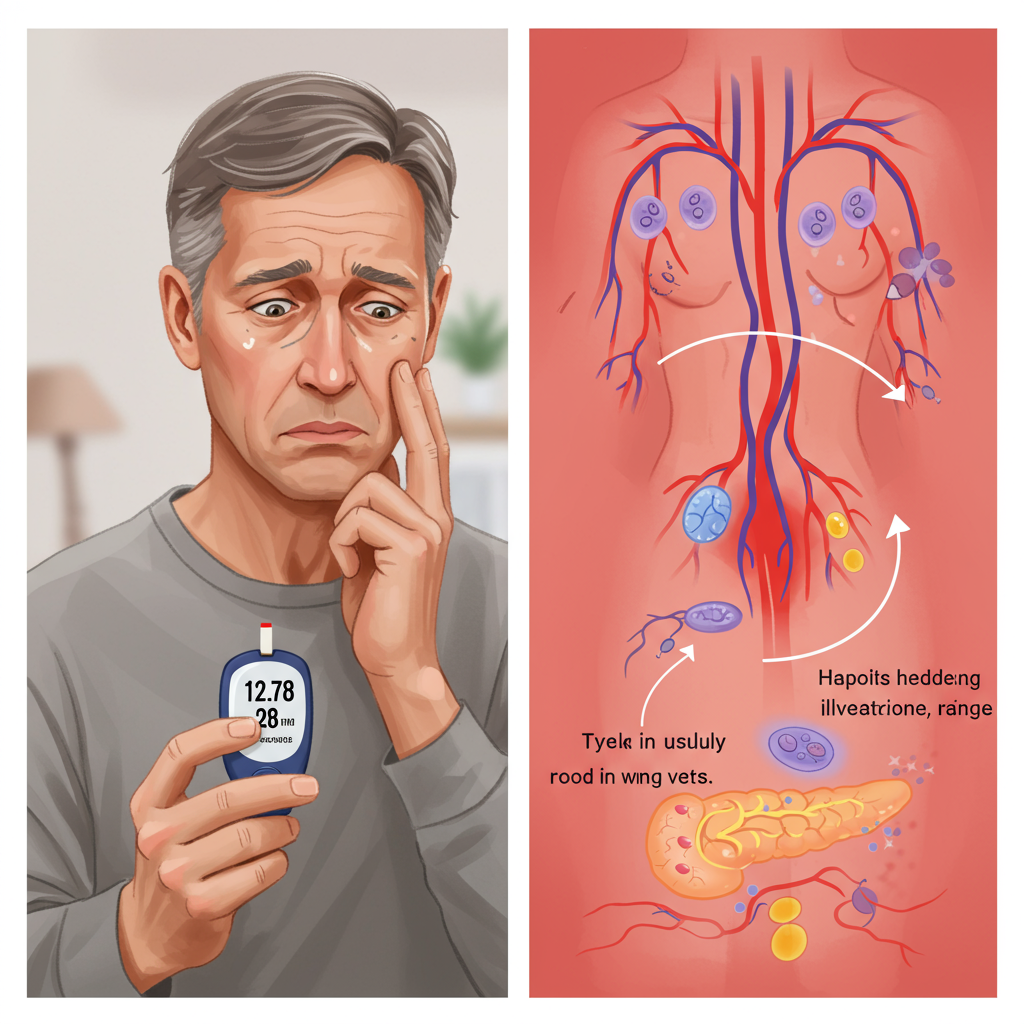Waking Up to Wellness: Why Prediabetes is Your Body's Urgent Call to Action
In the world of metabolic health, prediabetes is often misunderstood. It's not just a "pre-" condition that might someday become something more serious. It's not a waiting room for diabetes. It's your body waving a red flag, desperately trying to get your attention. Today, I want to reframe how we think about this critical health marker and explain why your prediabetes diagnosis is actually an incredible opportunity for transformation.
The Truth About Prediabetes: Already In The Danger Zone
When your doctor tells you that your blood sugar levels fall into the prediabetic range (fasting glucose between 100-125 mg/dL or A1c between 5.7-6.4%), what they're really saying is that metabolic dysfunction is already underway. Your cells are already experiencing the harmful effects of insulin resistance and chronic inflammation.
Prediabetes isn't "pre" anything. It's metabolic dysfunction that hasn't yet reached the arbitrary threshold we've labeled "diabetes." But make no mistake—damage is occurring:

- Your blood vessels are experiencing increased oxidative stress
- Your pancreas is working overtime, pumping out insulin to compensate for resistance
- Silent inflammation is spreading throughout your body
- Your brain function and cognitive health are already being compromised
According to recent research, up to 70% of people with prediabetes will eventually develop type 2 diabetes if they don't make significant lifestyle changes. But here's the empowering truth: unlike full-blown diabetes, prediabetes is almost universally reversible with the right approach.
The Food-First Revolution: Healing Begins on Your Plate
The conventional medical system might tell you to "watch and wait" or offer medications that do nothing to address the root cause of your condition. But I've seen thousands of patients completely reverse their prediabetes through a food-first approach.
Your most powerful medicine isn't in a pill bottle—it's on your plate. Here's where to start:
Eliminate Blood Sugar Triggers
- Refined carbohydrates and sugar in all forms
- Processed foods with artificial ingredients
- Industrial seed oils (corn, soybean, etc.) that promote inflammation
- Alcohol, which stresses your liver and disrupts glucose metabolism
Embrace Blood Sugar Balancers

- Quality proteins that stabilize blood sugar (wild-caught fish, pasture-raised meats)
- Healthy fats that improve insulin sensitivity (avocados, olive oil, nuts)
- Fiber-rich vegetables that slow carbohydrate absorption
- Phytonutrients that reduce inflammation (berries, leafy greens, cruciferous vegetables)
The most powerful intervention is simply eliminating the ultra-processed foods that drive insulin resistance. When you eat real, whole foods in the right proportions, your body's natural healing mechanisms activate remarkably quickly.
Beyond Food: The Holistic Prediabetes Reversal Blueprint
While nutrition is foundational, truly reversing prediabetes requires addressing all aspects of metabolic health:
Movement Medicine Exercise is a blood sugar "vacuum cleaner," activating GLUT4 transporters that pull glucose from your bloodstream into your muscles. Just 30 minutes of movement daily—even walking—can dramatically improve insulin sensitivity.
Stress Management Chronic stress triggers cortisol release, which directly raises blood sugar and promotes abdominal fat storage. Meditation, deep breathing, or time in nature can break this cycle.
Sleep Optimization Just one night of poor sleep can make you temporarily insulin resistant. Prioritize 7-8 hours of quality sleep by establishing a consistent sleep schedule and creating a dark, cool sleeping environment.
Strategic Supplementation While food comes first, certain supplements can support metabolic health:
- Magnesium (most Americans are deficient)
- Vitamin D (crucial for insulin sensitivity)
- Omega-3 fatty acids (reduce inflammation)
- Berberine (works similarly to metformin but naturally)

The Prediabetes Gift: Your Metabolic Wake-Up Call
When I work with patients who've been diagnosed with prediabetes, I always tell them the same thing: "This is the best bad news you could have received." Why? Because it's your body giving you advance notice that something needs to change—before irreversible damage occurs.
Prediabetes is your body's way of saying, "The path we're on leads to suffering, but we still have time to change course." It's an early warning system that, when heeded, can lead to profound transformation.
I've seen patients not only reverse their prediabetes but emerge healthier than they've been in decades—with more energy, better sleep, improved mood, clearer thinking, and a renewed sense of vitality. Many discover that the symptoms they thought were just "getting older"—joint pain, brain fog, fatigue—were actually manifestations of metabolic dysfunction that resolve when blood sugar normalizes.
Your prediabetes diagnosis isn't a life sentence. It's a call to action, an opportunity to reclaim your health, and potentially the best thing that could have happened to secure your healthiest future.
The choice is yours: Will you see prediabetes as a diagnosis to fear or as the wake-up call that changed everything?
References:
Tabák AG, Herder C, Rathmann W, Brunner EJ, Kivimäki M. Prediabetes: a high-risk state for diabetes development. Lancet. 2012;379(9833):2279-2290. doi:10.1016/S0140-6736(12)60283-9
Knowler WC, Barrett-Connor E, Fowler SE, et al. Reduction in the incidence of type 2 diabetes with lifestyle intervention or metformin. N Engl J Med. 2002;346(6):393-403. doi:10.1056/NEJMoa012512






